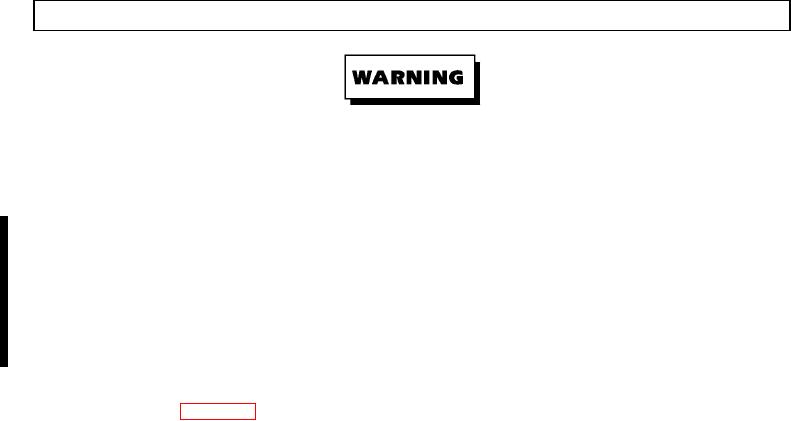
TM 5-2420-230-24-1
d. Always do PREVENTIVE MAINTENANCE in the same order until it gets to be habit. Once practiced, problems can be
spotted quickly.
e. If something looks wrong and cannot be fixed immediately, write it on DA Form 2404.
f. When doing PREVENTIVE MAINTENANCE, take along the tools and supplies needed to make all the checks. Always
take a clean cloth or two.
3-4. GENERAL MAINTENANCE PROCEDURES.
Degreasing Solvent (MIL-PRF-680) is toxic and flammable. Keep away from heat or flame. Never
smoke when using solvent. The flashpoint for Type II Degreasing Solvent is 141 F (61 C). Wear
protective goggles, face shield, and gloves; use only in a well-ventilated area; avoid contact with
skin, eyes, and clothes; and do not breathe vapors. Failure to comply may result in injury or death
to personnel.
If personnel become dizzy while using cleaning solvent, immediately get fresh air and medical
help. If solvent contacts skin or clothes, flush with cold water. If solvent contacts eyes, immediately
flush eyes with water and get immediate medical attention.
Adhesives, solvents, and sealing compounds burn easily and give off vapors that are harmful to the
skin and clothing. To avoid injury or death, keep away from open fire when using these materials,
and use only in well-ventilated areas. If adhesives, solvents, or sealing compounds contact the skin
or clothing, wash immediately with soap and water, and rinse thoroughly. Failure to comply may
result in injury or death to personnel.
a. Cleanliness. Dirt, grease, oil, and debris only get in the way and may cover up a serious problem. Use degreasing
solvent (Item 58, Appendix C) on all metal surfaces.
b. Bolts, Nuts, and Screws. Check bolts, nuts, and screws for obvious looseness, missing, bent, or broken condition.
Look for chipped paint, bare metal, or rust around boltheads. If any part seems loose, tighten it, or report it to Unit
Maintenance.
c. Welds. Look for loose or chipped paint, rust, or gaps where parts are welded together. If a bad weld is found, report it
to Unit Maintenance.
d. Electric Wires and Connectors. Look for cracked or broken insulation, bare wires, and loose or broken
connectors. Tighten loose connectors and make sure wires are in good shape. If a bad wire or connector is found, report
it to Unit Maintenance.
e. Hydraulic Lines and Fittings. Look for wear, damage, and leaks, and make sure clamps and fittings are tight. Wet
spots show leaks, and a stain around a fitting or connector could indicate a leak. If a leak comes from a loose fitting or
connector, tighten it. If something is worn out or damaged, report it to Unit Maintenance.
f. Damage to Vehicle. Damage is defined as any conditions that affect safety or would render the vehicle unserviceable
for mission requirements.
Change 1

